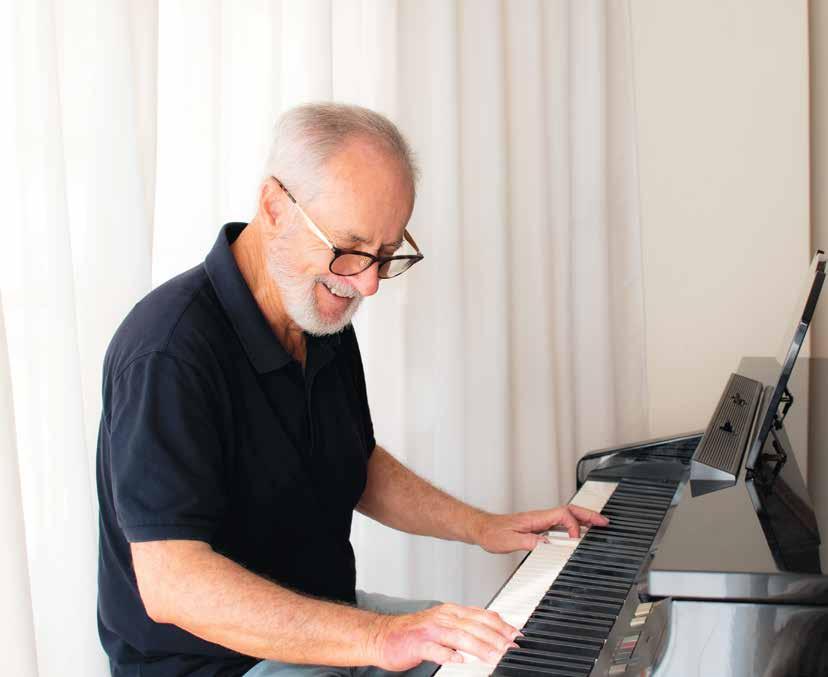
1 minute read
Reducing Pain With Music Therapy


Advertisement

Maximizing Lutein in Green Smoothies

Research indicates that lutein is essential for eye health, suppresses inflammation and offers cardiovascular health benefits. Because the human body cannot make this powerful antioxidant, it is important to include it in the diet by eating dark, leafy vegetables, such as spinach and kale.
A new study in the journal PAIN Reports conducted by researchers at University Hospitals Connor Whole Health, in Cleveland, looked at patient outcomes in pain reduction after music therapy. The study examined music therapy interventions provided to 1,056 adults that reported moderate to severe pre-session pain, anxiety or stress. Interventions included listening to live, music-assisted relaxation and imagery, and active music making. After a single music therapy session, the patients reported clinically significant reductions in pain, anxiety and stress. Additionally, patients receiving a music therapy session in which pain management was a goal were 4.32 times more likely to report pain reduction than those receiving the therapy without such a goal. While music therapy may be an effective, non-drug therapy for acute pain and distress management, additional research is needed to determine which characteristics of music therapy interventions influence pain improvements.
A new study in the journal Nutrients has found that coconut milk is the most effective plant-based milk to liberate lutein from spinach in green smoothies. The scientists from Linköping University, in Sweden, tested 14 liquids, and only four increased lutein liberation in spinach smoothies. Compared to blending spinach with water alone, coconut milk without additives was found to improve lutein liberation by 42 percent. Improved lutein liberation was also found with high-fat cow’s milk (36 percent), medium-fat cow’s milk (30 percent) and coconut milk with additives (25 percent). Researchers noted that soy milk with and without additives actually reduced lutein liberation by 40 percent and 61 percent,








